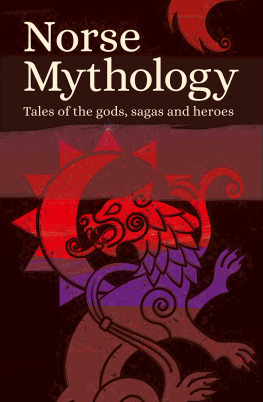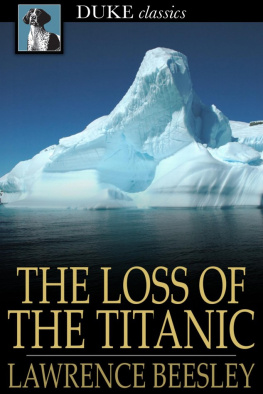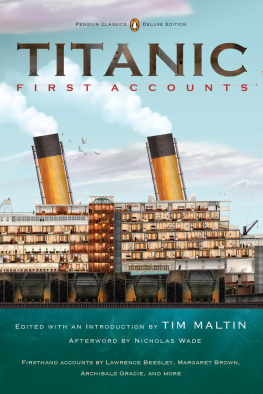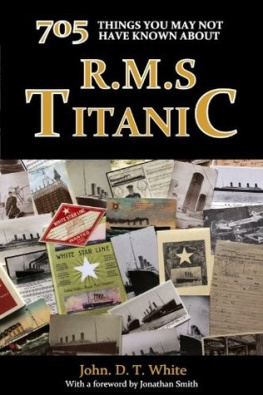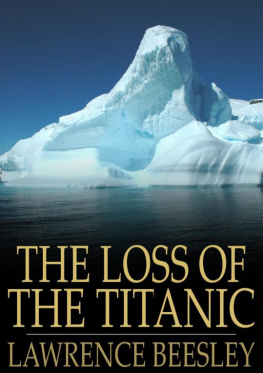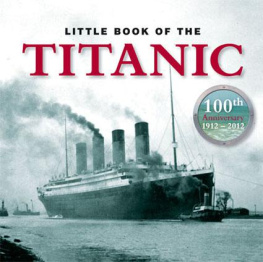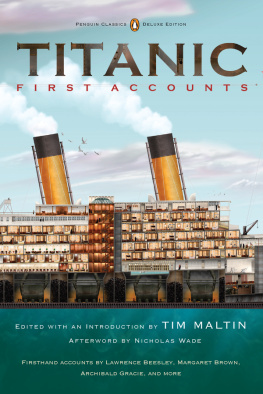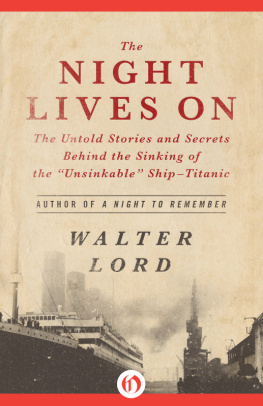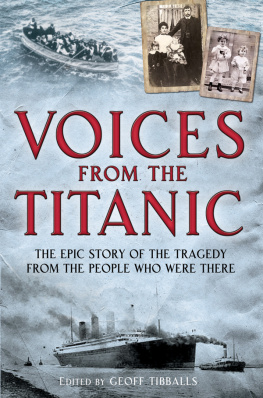Titanic and The New York Times:
Selected Coverage from Launch to Sinking
When word spread that the Titanic had struck an iceberg on April 15, 1912, during her maiden voyage, many news outlets ran optimistic reports describing the disaster, stating that the ship, while damaged, was on her way to safety. The New York Times, on the other hand, assumed the worst, and in so doing became the first newspaper to correctly convey news of the catastrophe.
Collected here are some of the stories The New York Times ran in April 1912, from Titanics promising launch at the beginning of the month to her tragic sinking, one of the most famous historical events of the 20th century.
TITANIC TESTS HER SPEED
-----
Then She Sails for Southampton to Prepare for Maiden Voyage
By Marconi Transatlantic Wireless Telegraph to The New York Times.
LONDON, April 2 The White Star liner Titanic, which has just been completed by Harland & Wolff, left Belfast harbor this morning and proceeded to Belfast Lough, where the compasses were adjusted and speed trials took place over a measured mile with excellent results.
Later she left for Southampton, from which port she sails on April 10 on her maiden voyage to New York with a large passenger list.
THE TITANIC SAILS TODAY.
-----
Largest Vessel in World to Bring Many Well-Known Persons Here.
Special Cable to The New York Times
LONDON, April 9 The White Star liner Titanic, the largest vessel in the world, will sail at noon tomorrow from Southampton on her maiden voyage to New York.
Although essentially similar in design and construction to her sister ship, the Olympic, the Titanic is an improvement of the Olympic in many respects. Capt. Smith has been promoted from the Olympic to take her across. There are two pursers, H. W. McElroy and R. L. Baker.
Among the passengers to sail tomorrow on the Titanic are Mr. and Mrs. H. J. Allison, Mrs. Aubert, Major Archibald Butt, Mrs. Cardeza, Mr. and Mrs. W. E. Carter, Mr. and Mrs. Herbert Chaffess, Norman Craig, Mr. and Mrs. Washington Dodge, Mr. and Mrs. Mark Fortune, Mr. and Mrs. W. D. Douglas, Col. Gracie, Benjamin Guggenheim, Mr. and Mrs. Henry Harper, Mr. and Mrs. Frederick Hoyt, Mr. and Mrs. Isidor Straus, Mr. and Mrs. J. B. Thayer, and Mr. and Mrs. George Widener.
TITANIC IN PERIL ON LEAVING PORT
-----
Suction of Giant Liner Breaks Hawsers of the New York, Which Floats Helpless.
-----
TUGS PREVENT COLLISION
-----
Catch the New York with Ropes Just in Time and Drag Her Away.
-----
LIKE THE OLYMPIC ACCIDENT
-----
Suction Theory Shown to be CorrectEnthusiasm as the Titanic Begins Her Maiden Voyage.
-----
Special Cable to The New York Times
LONDON, April 10 As the great new White Star liner Titanic was leaving Southampton today on her maiden voyage to New York a disaster was narrowly averted and dramatic proof of the correctness of the much debated theory of suction was given.
As the Titanic passed from her berth out to the open stream of Southampton water she sucked the water between herself and the quay to such a degree that the strain broke the strong hawsers with which the American liner New York was moored to the quayside, and for some time a collision between the two vessels looked likely.
The New York began drifting helplessly, stern first, toward the Titanic. A witness on the shore, describing the incident, says:
The crowd watching from the quay was breathless with excitement. The people climbed into railway trucks to see what was going to happen.
As soon at the New York broke loose the Titanic reversed her engines and in a brief space of time stopped dead and began to back. Then the tugs Neptune and Vulcan raced at the New York, caught her with ropes by the bows and stern, and tried to lug her back to her place. It was difficult to tell the distances, looking broadside on, but there was no much room to spare between the New Yorks stern and the Titanics side.
However, no one in uniform was flurried. The Master of the Port with a megaphone stood on the quay issuing orders across the water as calmly as if he were having tea. He had the New York pulled back to the quay and there moored securely. Then he let the Titanic go on again toward the open water. She had backed right away toward the deep water dock while the New York was being tugged about like a naughty child.
By Wireless.
There are about 1,300 passengers aboard the Titanic, of whom 350 are in the first cabin. J. Bruce Ismay, Chairman of the White Star Line, is making the trip and occupies a suite de luxe.
Among the passengers is Clarence Moore of Washington, who came to see the Grand National run. While here he bought fifty couples of hounds drawn from the best packs in the North of England. They will be shipped to America shortly for use with the Loudoun hunt in Virginia, of which Mr. Moore has been appointed Master for a term of three years. Mr. Moore, who is usually one of the judges at the International Horse Show at Olympia, is not coming over for this years show.
Mr. and Mrs. Isidor Straus are returning home after wintering at Cap Martin. Incidentally Mr. Straus has been investigating the currency question in Europe for the purpose of deriving information that will help us in new legislation for reforming our currency. Mr. Straus, who is enjoying excellent health, says he does not look for any great revival of business until after the Presidential election.
Major Archibald Butt is also a passenger. He spent last week with his brother, who lives in Chester, and says he had a very pleasant holiday, but is glad to be getting home again.
Other passengers, besides those mentioned in yesterdays dispatch to The New York Times, are W. T. Stead, who goes to speak at the peace celebration in Carnegie Hall on April 21; Robert W. Daniel, the Philadelphia banker, who takes a champion French bulldog which he recently bought here; Col. And Mrs. J. J. Astor, Countess Rothes, who is en route to join her husband, and Mrs. J. Stuart White.
Mr. and Mrs. Henry B. Harris are also on the Titanic. They have been touring in North Africa. Mr. Harris said the only definite theatrical arrangement he made here was for Rose Stahls appearance in London in the Spring of 1913 in


